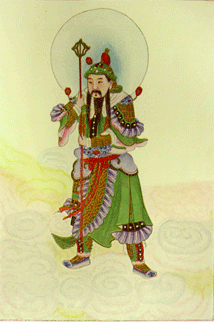The Chinese New Year is also know as the Spring Festival and Lunar New Year
The Chinese New Year is usually celebrated on the 2nd new moon after the winter solstice and ends with the full moon 15 days later. This year the Chinese New Year starts on January 29. The year will be 4703.
There are many traditions associated with the Chinese New Year. Here are some of them:
In preparation for the New Year, houses are swept clean to get rid of traces of bad luck. But there is no sweeping on New Year’s Day for fear of sweeping away good luck.
No sharp objects can be used on New Year’s Day. They might cut out the good luck.
To maintain honor, all debts must be paid before the New Year begins.
Red is the color for luck and to ward off evil spirits. Red also symbolizes happiness. People will paint their doors red and decorate the house with red and gold ornaments. Gold is another important color since it symbolizes wealth.
People often wear red for the New Year. Black and white are not usually worn, since they’re considered colors of mourning. (Red is also the traditional color for brides’ gowns in China.)
Sayings of good luck are written on red scrolls or banners and used as decorations. Happiness, prosperity and longevity are primary themes.
Pictures of Door Gods are sometimes hung on the front door to keep out the evil spirits.
Flowers and fruit are symbols of the New Year. Traditional flowers for the Chinese New Year are Plum Blossoms, Narcissus, Azaleas, Peonies, and Water Lilies. Flowers symbolize good health and wealth. It’s particularly good luck if a flower opens its bloom on New Year’s Day. The most important types of fruit for the Chinese New Year are oranges and tangerines, which both symbolize happiness.
The New Year is also a celebration of ancestors – sometimes places will be laid at the table for ancestors on New Year’s Eve.
People have a special meal on New Year’s Eve and will stay up till midnight to welcome in the new year.
At Midnight people light fireworks to ward off evil spirits and welcome back the Kitchen God.
Celebrations can last for 15 days.
At the end of the New Year’s celebration, on the 15th day after the start of the new year, there is a Festival of Lanterns. There’s a parade of children carrying lanterns lit by candles inside which represent the moon.
Come Visit Mama Lisa’s Chinese New Year Page for more about the Chinese New Year.
Happy New Year!
Lisa
Come visit the Mama Lisa’s World China page for Kids Songs from China and
The Mama Lisa’s World Taiwan Page for more Chinese Children’s Songs
This article was posted on Saturday, January 21st, 2006 at 6:00 pm and is filed under China, Chinese, Chinese New Year, Countries & Cultures, Holidays Around the World, Hong Kong, Taiwan. You can follow any responses to this entry through the RSS 2.0 feed. You can skip to the end and leave a response. Pinging is currently not allowed.


























January 21st, 2006 at 11:04 pm
Ray Lee from Hong Kong wrote me…
“Another Chinese New Year tradition that I remember, but not all of its details, is that, while you are encouraged to visit friends and relatives during the New Year, there is one day, the fifth day of the New Year, on which you’re discouraged to do so. Supposedly people tend to have short temper on that day and social interaction might lead to arguments.”
I read that the 5th day of the Chinese New Year is called “Po Woo”. It’s considered to be bad luck to visit people on that day.